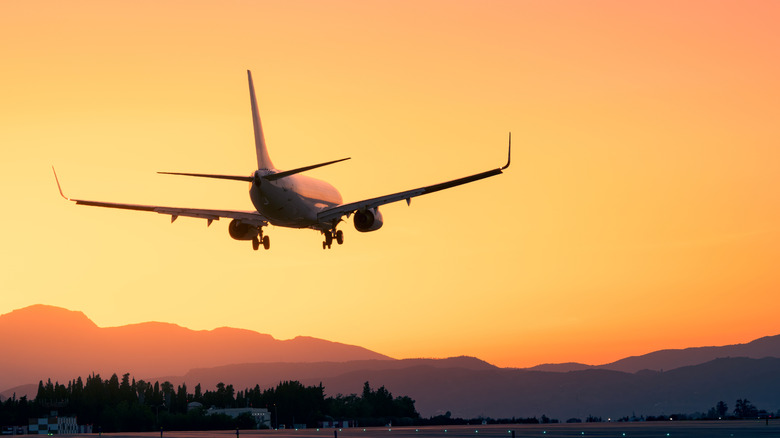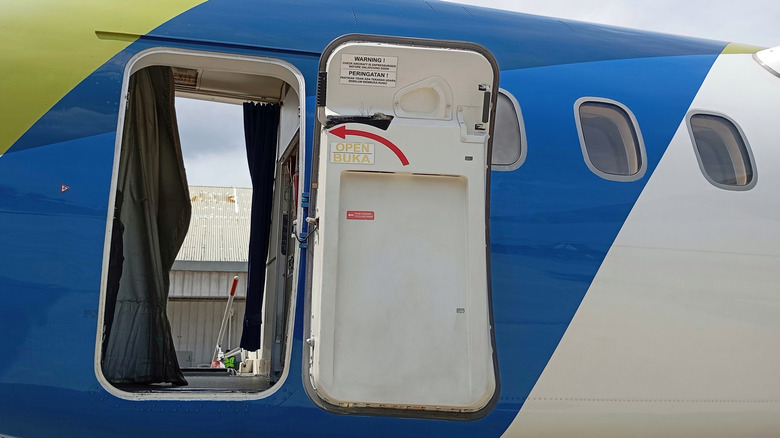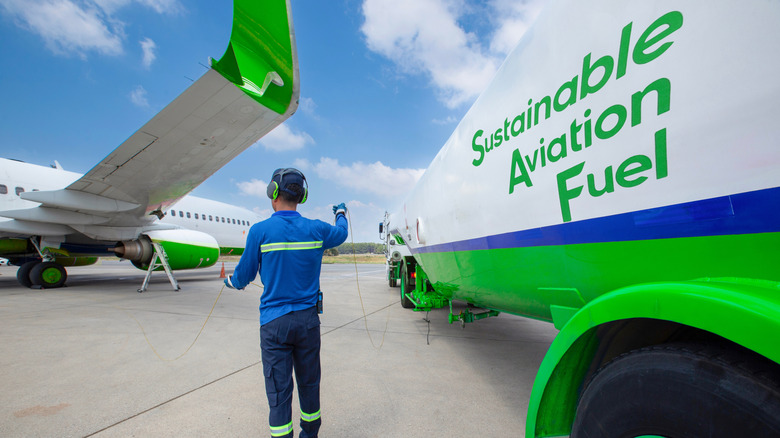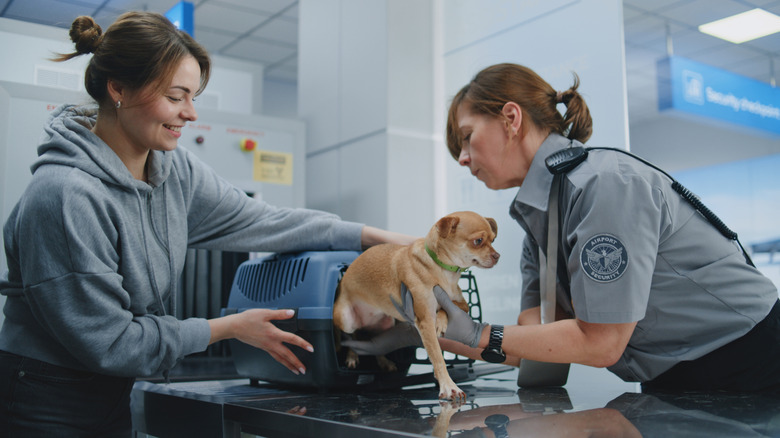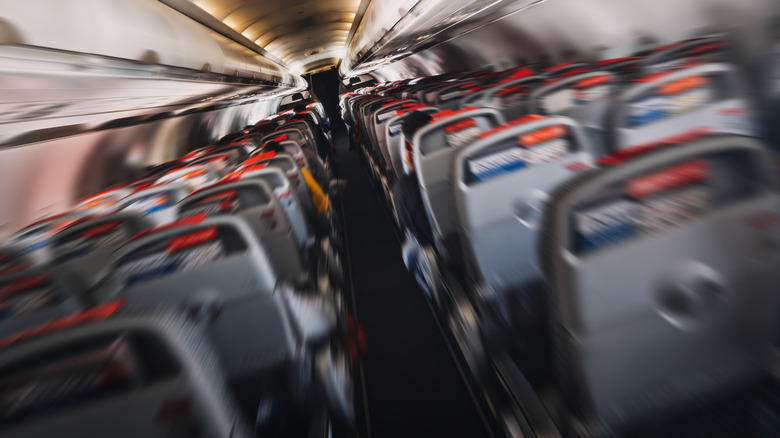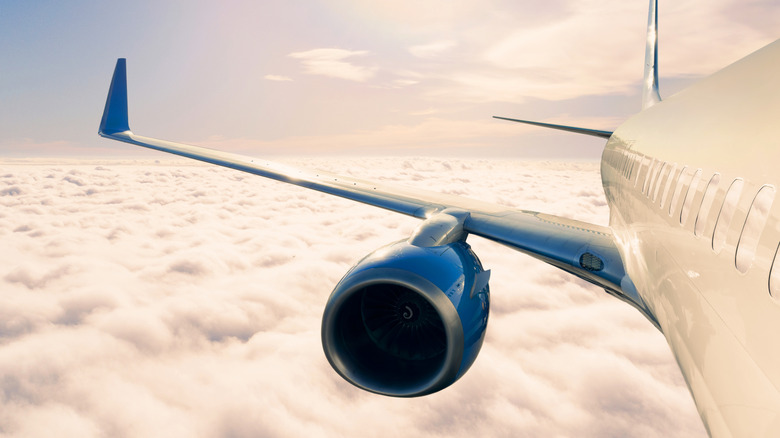5 Airline Myths Popularized By Hollywood
Since the Wright Brothers took to the skies, planes have been just as much an endlessly fascinating fixture of pop culture as they have been among the safest form of travel out there. It's hard not to be inspired by these mechanical marvels and what they represent in the course of human history, giving mankind the means of conquering a realm once thought to be impossible to penetrate. The larger-than-life idea attached to these airplanes has made them a natural choice to put front and center in countless movies and TV shows.
But as we all know, what we see on the big screen isn't always a one-for-one depiction of reality. This is certainly the case with airlines. As these environments open the door to everything from laugh-out-loud moments to nail-biting action scenes, Hollywood has never hesitated to stretch the truth of what goes down while up in the air. While some productions opt to bring on aviation consultants for greater accuracy, writers, directors, and producers aren't always obliged to follow their advice to the letter, choosing to put excitement and drama at the forefront.
It's safe to say that most audiences — ourselves included — wouldn't want our favorite airline scenes any other way and are well-aware that everything we see on screen isn't meant to be taken with the utmost seriousness. Nevertheless, it's fun to dive into just how wrong Hollywood has depicted air travel over the years and what the truth is behind these common myths.
Airplane doors can be opened mid-air
A common trope seen in high-stakes action scenes set on a plane is for a door to be busted open while in the air. Whether to aid in an escape, such as in 1997's "Air Force One" or in the midst of a tense battle as in 2014's "The Amazing Spider-Man 2," this setup is an easy way to get audiences on the edge of their seats. But for such a scenario to become a reality would take more muscle than even the toughest action star could muster.
While cabin doors could potentially be opened during descents or takeoffs, the force required to do so mid-flight is far beyond the realm of human strength. The pressure within a cabin far exceeds the air pressure outside of the aircraft. This not only allows passengers to breathe while being thousands of feet in the air, but also ensures that the door remains firmly in place.
To be able to open a door at such altitudes would require over 24,000 pounds of pressure. Even in areas of lower altitude, the chances of opening a plane door are slim to none, as even here about 1,100 pounds of pressure per square inch is needed to open the door. Additionally, plane doors are always kept locked during flights and can only be opened by the pilot.
Using jet fuel as a plot device
When most of us hear fuel, we think of the gasoline that powers our cars. Given the high flammability of this substance, there are many important things drivers must keep in mind at the pump to avoid an accident from taking place. So imagine all the danger that could arise when a massive aircraft's fuel is in jeopardy. This has proven to be yet another gold mine of entertainment possibilities that Hollywood is all too happy to dig up when a plane calls for an explosive end, such as the finale of "Die Hard 2."
Of course, jet fuel is flammable, but getting it to ignite takes a lot more than Bruce Willis flicking on a lighter and spouting a catchphrase. Given the safety and performance concerns that need to be considered while up in the air, jet fuel is required to be more resistant to flames than gasoline. The dense compounds that make up most commercial plane fuel release little vapor and have a flash point of 100 degrees Fahrenheit (38 degrees Celsius). This is significantly higher than that of car gasoline, which can even light up at below freezing temperatures with a flash point of -45 degrees Fahrenheit (-43 degrees Celsius).
Additionally, movies such as 2012's "Flight" have erroneous depictions of planes releasing their fuel reserves as a way of lightening their load for an emergency landing. While there are planes that can do this, single-aisle models such as the McDonnell Douglas MD-80 showcased in the movie are unable to employ this capability.
The TSA is an intense operation
Few look forward to going through this TSA, as you're required to wait in long lines, remove everything from your pockets, take off hats and shoes, and be potentially halted for carrying prohibited items. Adding to its reputation are how TSA and its employees are typically depicted in movies and shows.
With the multitude of detection devices present at TSA checkpoints, it's easy to assume that these are highly advanced stations with officers who will take action at the slightest sign of suspicious activity. This is something put at the forefront of movies like Netflix's 2024 thriller "Carry-On," where a young TSA officer played by Taron Egerton works to apprehend a weapon-carrying traveler, which has drawn significant criticism from TSA departments for its wild exaggerations and inaccuracies. While TSA agents do take their job seriously and are trained to keep an eye out for subtle odd behaviors, their main focus is to keep lines moving and check for non-permitted items, and it's unlikely that an officer at that level would go to the lengths of Egerton's protagonist to take down a criminal.
However, that's not to say that all movies get on the TSA's bad side. 2017's "Get Out" featured a more jovial and welcoming depiction of a TSA officer with Rod Williams, who was played by Lil Rel Howery. The character played an important role in saving the day, resulting in many real-world TSA employees praising the depiction for representing them in a far more flattering light than the unpleasant stereotype commonly associated with their line of work.
Turbulence can be the end of your life
For some, the slightest disturbances on a plane are enough to send them into a panic. Filmmakers are well aware of this and have tapped into this fear by depicting even regular airplane occurrences as signs of danger. This is especially the case when turbulence occurs, a phenomenon where the aircraft encounters irregular airflow, resulting in rough bumpiness for all on board.
The sudden shock of this harsh movement is easy to make seem scary, with even a 1997 Ray Liotta thriller taking full advantage of this by literally being named "Turbulence." Many times, movies will depict turbulence in grandiose fashion, with the plane moving uncontrollably, oxygen masks being deployed, and electrical failures abound. This level of chaos, as you can imagine, is greatly exaggerated.
Turbulence is the equivalent of a speed bump on the road or rough waters at sea; an inconvenient yet normal occurrence. The combination of skilled pilot maneuvers, a well-designed aircraft, and communication with Air Traffic Control makes the chances of serious harm coming from turbulence practically zero. In fact, most commercial aircraft are capable of taking up to 150% of the maximum stress levels possible to experience in Earth's atmosphere. On a similar note, despite what Hollywood may have you believe, planes are also surprisingly durable to lightning strikes, as modern aircraft are designed to receive little to no damage in the case of an encounter.
Planes can't operate with only one engine
In practically any movie where the pilot states that one of the engines has failed, you know that means disaster is at hand for those on board. And indeed it would appear that'd be the case for real life as well. While some rough weather or bumps in the air may be possible to outmaneuver, a plane operating without one of its engines sounds more like a fantasy than anything the movies could conjure up. But this is a case where reality is stranger than fiction.
In most cases, commercial aircraft come equipped with two or more engines. Even though it's ideal to have both working simultaneously, each engine is more than capable of powering the airplane on its own. In fact, any multi-engine plane is legally required to come equipped with this capability so that if an engine does malfunction while in mid-flight, the vessel still operates. While the plane may not be as fast or efficient in these circumstances, it will nevertheless still get everyone on board to their destination safely, which is what matters most at the end of the day.
